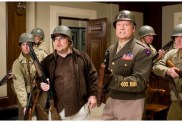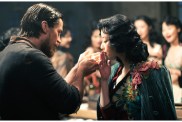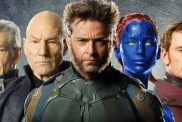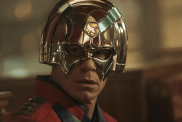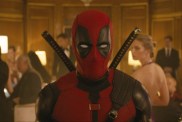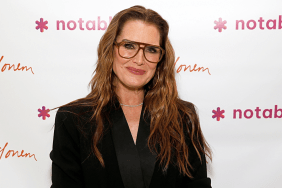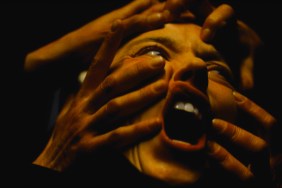Now available on DVD

Cast:
Tyler Mane as Adult Michael Myers
Malcolm McDowell as Dr. Sam Loomis
Scout Taylor-Compton as Laurie Strode
Sheri Moon Zombie as Deborah Myers
Daeg Faerch as Young Michael Myers
Brad Dourif as Sheriff Leigh Brackett
Danielle Harris as Annie Brackett
Kristina Klebe as Lynda
William Forsythe as Ronnie White
Danny Trejo as Ismael Cruz
Udo Kier as Morgan Walker
Lew Temple as Nole Kluggs
Hanna Hall as Judith Myers
Daniel Roebuck as Lou Martini
Dee Wallace Stone as Cynthia Strode
Directed by Rob Zombie
Movie:
It’s common for fans to disparage the test screening process and the post-production tampering that typically follows, as it seems to fly in the face of good filmmaking. If a director isn’t allowed to have the final say-so in regards to their own movie, then what’s the point? Opening up the creative process to the knee-jerk opinions of random screening participants and nervous studio execs out to second guess their director and appease as many undiscerning mallrats as possible is no way to produce a satisfying film.
At least that’s not the way it’s supposed to be. But there are exceptions to every rule and watching writer/director Rob Zombie’s unrated cut of his controversial “Halloween” remake serves as an unintended testimony to the virtue of creative compromise. While I had some issues with the version of “Halloween” that played in theaters last August, I generally felt that Zombie deserved credit for putting his own stamp on what could’ve been an anonymous retread in other hands.
If his film struck many as an act of unconscionable heresy â well, so be it. I don’t think shaking Halloween fans out of their stupor is such a bad thing and Zombie’s film at least accomplished that. But given the opportunity to restore material sacrificed for the theatrical cut, Zombie has delivered an expanded version that shows that his vision for the film in many ways benefited from being tempered as what played in theaters was the superior movie.
Forcing myself to recall the original positive vibe I felt towards Zombie’s “Halloween,” what appealed to me most and what I still enjoy about it is its three-act structure. Not because it represents anything innovative but because I just like the fact that Zombie’s origin tale harkens back to 1978 less to Carpenter’s “Halloween” but to another landmark film from that same year â Richard Donner’s “Superman: The Movie.” Just as Donner told the origin of the Man of Steel as essentially three separate films â with segments taking place in Krypton, Smallville and finally Metropolis â each with its own distinctive cinematic style and identity, so to does Zombie’s “Halloween” form its own mini-trilogy, beginning in Haddonfield for Michael’s childhood, moving to Smith’s Grove Sanitarium for his adolescence and early adulthood and finally returning to Haddonfield as the adult Michael brings the full force of his wrath on his hometown. I don’t know â maybe “Halloween’s tagline should’ve been “You Will Believe A Man Can Stab.”
But even as I appreciated Zombie’s ambition to give fans the big picture of Michael Myers, in truth his “Halloween” (in either the R-rated or unrated cut) explains absolutely nothing. All we learn by seeing Michael’s backstory is that he had a deplorable home life as a child and that his time in Smith’s Grove was no picnic either. Not exactly headline news, right? But at least the R-rated cut was quick to make its points and move on. The unrated cut most noticeably extends the Smith’s Grove segment of the film in an effort to deepen Zombie’s insight into Michael but these scenes were best left behind. More psychobabble is emphatically not what this film needed. The theatrical cut included just enough institution-set exchanges between Daeg Faerch’s Michael, Sheri-Moon Zombie’s Deborah Myers and Malcolm McDowell’s Loomis to convey a feel for Michael’s time in Smith’s Grove. The new scenes give this section of the film a meandering quality that the R-rated cut was able to avoid.
It also doesn’t serve the film well to soften the portrayal of Michael the way this version does. Michael’s encounter with the nurse played by Sybil Danning was far more effective in the theatrical cut where her fate seemed much more arbitrary and vicious. Now Zombie has re-instated a snarky line of dialogue from Danning that puts Michael’s actions in a slightly more sympathetic light. His actions still aren’t justified by any normal standards but we see that he’s reacting out of anger, rather than from random impulse. The later is far scarier and also more heartbreaking, as we finally understand that Michael harbors a murderous impulse that’s beyond the reach of either Loomis’ psychiatry or his mother’s love to repair. For Michael to kill someone simply because they were careless enough to leave their guard down is terrifying. It’s not as scary to see him attack someone who’s provoked him â no matter how extreme his actions might be.
And again, Michael’s escape from Smith’s Grove was much better depicted in the theatrical cut than in the unrated version. In this unrated version, Zombie ditches the more traditional breakout scene of the R-rated cut where most of the crew from “Devil’s Rejects” were transporting Michael to another facility in favor of reinstating the original version where two guards played by Lew Temple and Courtney Gains drag a female inmate into Michael’s cell to rape her in front of Michael, leading Michael to kill the guards and subsequently escape.
This scene’s needless reinsertion is an exasperating move on Zombie’s part. The breakout scene shot for the R-rated cut may not have been especially original but it got the job done whereas the rape scene derails the film on several levels. For one, its yet another move to turn Michael into a sympathetic monster â giving the impression that he’d be just fine if everyone would leave the poor guy alone.
Secondly, the actions of the guards are just beyond reason. Not that I don’t believe these characters would choose to rape a defenseless woman â sadly it’s not hard to believe that. But it is impossible to believe that they would go through the extra effort to do so in front of Michael, right in his cell.
I don’t care how cocky you are, how mentally deficient you are, or what a prize asshole you might be â no one would go out of their way to antagonize the fucking gorilla that Tyler Mane’s Michael is here unless they were doing so while sitting inside of a tank. This dude could be bouncing a baby on his lap and I still wouldn’t feel like he wasn’t a heartbeat away from making me eat my own liver.
But the worst part about this scene is that it defuses the sense of purpose behind Michael’s escape. At least in the theatrical cut, it’s understood that Michael was just biding his time all along â that he really could’ve escaped at almost any point and this was just the moment he chose. In the unrated cut, it becomes incidental. If these two idiots hadn’t come into Michael cell, Michael would not have even bothered to escape. So what’s the point to Michael’s character, then?
In his audio commentary, Zombie says that he felt like this scene had more resonance than the R-rated breakout scene as it gave closure to Lew Temple’s character and in defense of this scene’s plausibility, he cites some Geraldo Rivera specials he saw in the ’70s that revealed the kind of patient abuse that this scene depicts. To that, I say losing Temple’s character along the way was an easy hit for this movie to take and that while these kinds of abuses may be true-to-life, this isn’t a documentary about the tragic conditions of mental intuitions, it’s a “Halloween” movie.
Much more added footage finds its way into this cut, none of it as damning as the rape scene but none of it good, either. Did we really need to see a scene of Laurie and her mother (Scout Taylor-Compton and Dee Wallace) trying to repair a plastic skeleton, for instance? Ironically, in contemplating how much less I liked this cut than I had the theatrical one, I flashbacked to my unhappiness with the expanded-for-TV cut of Carpenter’s original â a version that added such tedious scenes as Loomis voicing his concerns about adequate security before an indifferent Smith’s Grove hearing board and of Loomis confronting a young, blank-faced Michael in his cell. But some fans enjoy that version so this might be up their alley, too.
I do wish this two-disc set had included the R-rated version, though, as I believe it was the far more successful cut. Some fans might anticipate this to be more fleshed-out than what they saw in theaters but the added footage only highlights Zombie’s awkwardness as a storyteller. But however you feel about the movie, the exhaustive extras on this two-disc set provide a satisfying look into the making of the most controversial horror film of the year.
Extras:
Disc 1:
Feature length commentary by Rob Zombie
As a character in another John Carpenter movie once noted, “you can’t argue with a confident man” and so it goes with Rob Zombie. This is clearly someone who has very strong ideas about what he wants. He never comes across as arrogant, simply sure of himself â which is a good quality to have when you’re putting a feature film together by the seat of your pants as seems to have been the case here.
Improvisation played an important part on the “Halloween” set as Zombie discusses his methods towards eliciting natural performances from his actors such as how most of the exchanges between Faerch and McDowell were based on Zombie giving each actor material that the other wouldn’t know about and seeing how their conversations would unfold.
Zombie’s solo talk reveals substantial production information and insights into various unforeseen issues â such as the fact that FX artist Wayne Toth modeled the Michael Myers mask to fit Tyler Mane’s head without anticipating the fact that Mane would be also be wearing a long-haired wig as Michael which made donning the tight-fitting mask a problem. But my favorite piece of information that Zombie shares is Danny Trejo’s put out reaction to his character’s undignified exit: “Yo, Rob â why you got to make me look like a bitch?”
Disc 2:
Alternate Ending
Zombie has some positive things to say about this ending’s “Beauty and the Beast” qualities on his accompanying commentary but this scene would’ve been a flat, unsatisfying finish. And as Zombie observes, it would’ve left the character of Laurie Strode almost entirely a non-entity in the movie. At least the new ending that was shot â which is still practically the same in both the R-rated and the unrated cuts â gives Laurie a chance to emerge more strongly as the film’s heroine.
Deleted Scenes with Optional Director’s Commentary
Even with the extended running time of Zombie’s unrated cut, there’s still a whopping twenty two minutes of cut scenes to be found here: Rabbit In Red, Quickdraw, End Of A Long Night, Rainy Evening, Not A Monster, You Seem Sad Today, The Media, Xmas Gift, Parole Hearing, Night Shift, and Very Young. And while it’s cool to see Daniel Roebuck as the owner of the Rabbit in Red (a character only briefly glimpsed in both the R and theatrical cuts), Tom Towles as a councilman attending a parole hearing and Adrienne Barbeau as a woman working at an adoption agency (both characters non-existent in any cut of the film), even without listening to Zombie’s commentary it’s easy to understand the pacing issues that kept these scenes aside.
Bloopers
Whether you liked this film, hated it, whatever â this blooper reel (which runs about ten minutes) is almost worth the disc alone with McDowell cutting loose behind the scenes to hysterical effect.
The Many Masks of Michael Myers
One thing that almost everyone agrees on whether they liked this film or not was the fact that the mask worn by Michael here was the finest version seen since the original. Make-up artist Wayne Toth did the honors and this brief featurette gives a glimpse into how important it was to get the mask right and how important the motif of masks are in the film.
Re-Imagining Halloween
The technical credits on “Halloween” are impeccable and the three-part documentary included here explores the contributions of director of photography Phil Parmet (who talks about the unexpected films Zombie sought to visually emulate, such as “21 Grams”), producer Andy Gould, production designer Anthony Tremplay (the amount of detail visible in each set is outstanding), and Make-up Designer Wayne Toth. While not as extensive a behind-the-scenes doc as the standard-setting one that is on Zombie’s previous film, “The Devil’s Rejects,” it’s still a strong package. The doc’s three segments are From Camera To Screen, Production Design, and The Make-Up Effects, Props, and Wardrobe.
Meet The Cast
One of the strongest aspects to this film is its cast and here everyone gets a chance to sound off about their respective characters and Zombie’s approach to directing. And Zombie himself comments on his choices. Some have griped about Zombie’s predilection for casting many actors he’s already worked with but I don’t understand the complaint. After all, no one ever gives directors like P.T. Anderson or Wes Anderson shit for using the same repertoire of actors.
And in genre circles, isn’t this exactly what Roger Corman always did â using the same pool of talent? It’s what Stuart Gordon has done many times, and it’s also a hallmark of Joe Dante’s films. When I watched early Joe Dante films as a kid, it never occurred to me to complain that the same people invariably showed up â I didn’t roll my eyes every time Dick Miller came on the screen. So ultimately I think Zombie deserves a bit of a break on this count.
Casting Sessions
This is the longest of the special features and covers fifteen actors â Daeg Faerch, Scout Taylor-Compton, Danielle Harris, Kristina Klebe, Hanna Hall, Adam Weisman, Skyler Gisondo, Jenny Stewart, Daryl Sabara, Pat Skipper, Clint Howard, Nick Mennell, Max Van Ville, Mel Fair and Courtney Gains â including one screen test apiece with Danielle Harris’ being a highlight â showing her uncommon ability to be edgy but still personable.
Laurie Strode Screen Test
I was hoping that seeing this movie a second time would help ingratiate Scout Taylor-Compton’s performance to me a bit more but, um, no dice. I still found her portrayal of Laurie to be just as annoying (I worry that the ability to depict empathetic characters is fast becoming a lost art in horror films). Elsewhere on the special features, Zombie talks about his feeling that he couldn’t make his Laurie exactly like Jamie Lee Curtis’ Laurie as to a modern audience the character would’ve seemed “Amish or something” but despite his and Taylor-Compton’s work to make their Laurie a heroine with more attitude, I just wasn’t feeling it. But here’s her screen test along with in-character footage along with Danielle Harris and Kristina Klebe.
Rounding out Disc 2’s special features are ‘sneak peeks’ for recent Dimension Films genre offerings, such as “Death Proof,” “Planet Terror” and “1408” as well as “Halloween’s own theatrical trailer.

